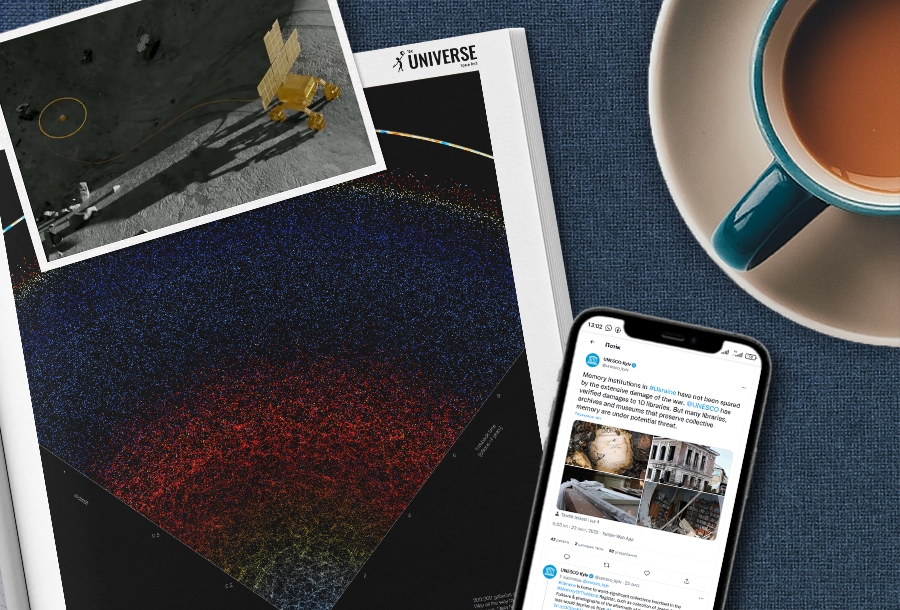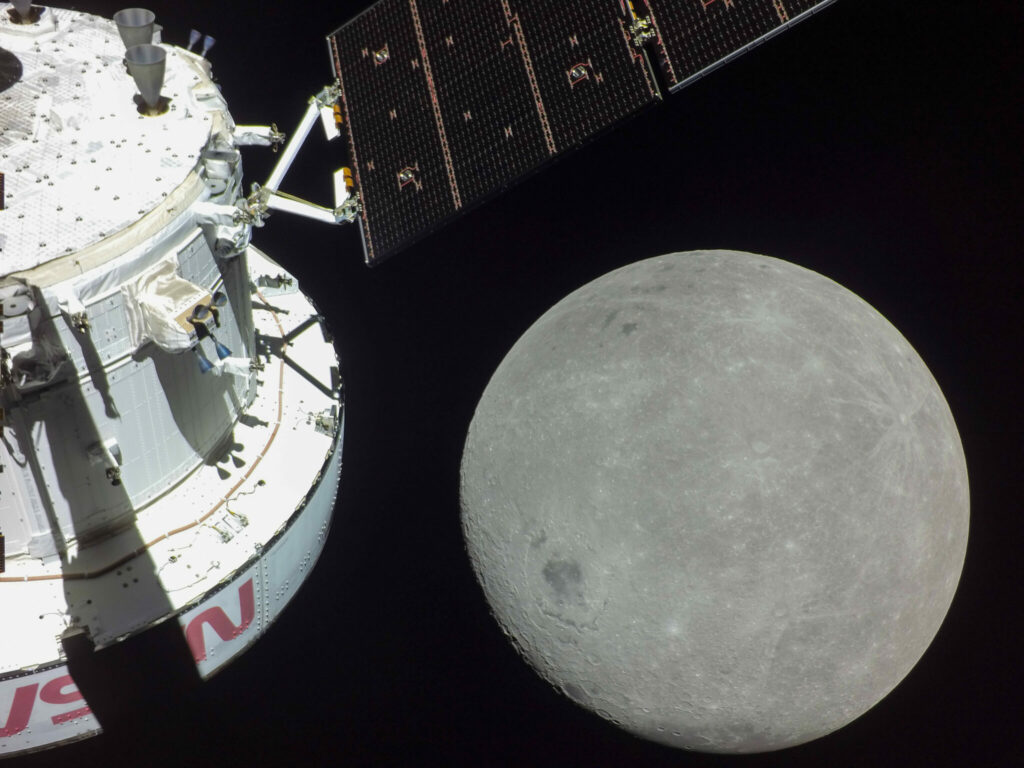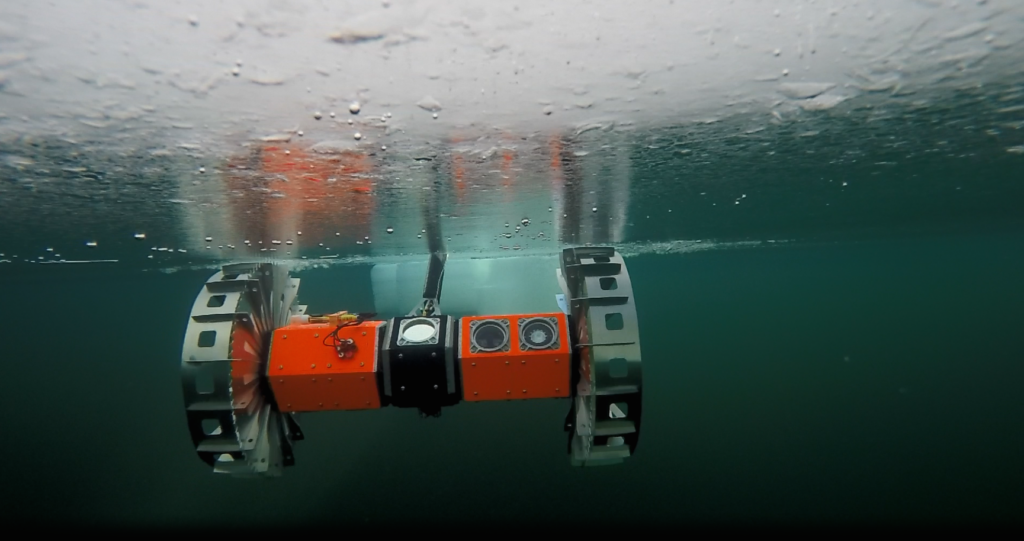A selection of the most interesting space news for the week: astronomers created an interactive map of the universe; Canadians are developing a rover to transfer power on the Moon, and we tell how Antarctica is helping astrobiologists study extraterrestrial life.

” To invent, you need a good imagination and a pile of junk.”
― Thomas A. Edison
UNESCO uses satellites to monitors the destruction of cultural heritage in Ukraine
UNESCO, which is a division of the United Nations, uses satellites to monitor the state of cultural heritage in Ukraine. The Russians are actively destroying it, and experts are resolute to record these facts. As of today, UNESCO notes more than 200 cases of damage to cultural objects in Ukraine. They are mainly located in Donetsk, Kharkiv, Luhansk provinces and in the city of Kyiv. Among the partially or completely destroyed are 88 religious buildings, 15 museums, 76 buildings of historical or cultural value, 18 monuments and 10 libraries.
Falcon 9 did not return to Earth after the 11th launch
On November 22, SpaceX’s Falcon 9 rocket launched into space for the eleventh time. But, unlike its previous ten flights, this time the first stage did not return during the famous vertical landing, but burned up in the atmosphere. It was SpaceX’s oldest active rocket stage which previously supported the launch of the Telstar 18V and Iridium-8 satellites, as well as nine missions to deploy the Starlink Internet Constellation. SpaceX usually lands the first stages of the Falcon 9 shortly after launch. But as the mission required more power to launch the 5.5-tonne Eutelsat satellite into orbit, the stage did not have enough fuel to soft-land for later use.
Astronomers have created an interactive map of the universe
A team of astronomers from John Hopkins University has published a new interactive map of the universe. It shows the locations and actual colors of 200,000 galaxies. The map was created from data collected as part of the Sloan Digital Sky Survey. This project has been implemented since 2000. As a part of it, astronomers study the spectra of stars and galaxies using a 2.5-meter wide-angle telescope installed at the Apache Point Observatory in the state of New Mexico.
A machine learning algorithm discovered a thousand supernovae
The scientists applied the SNIascore machine learning algorithm to the data obtained by the Zwicky Transient Facility (ZTF) instrument. Over the past 19 months, it was able to detect and classify a thousand supernovae. ZTF is an automated telescope installed at the Palomar Observatory (California, USA). Every night, it surveys vast areas of the starry sky and collects data on the brightness and spectra of all objects that fall into its field of view.
The telescope observes many events — from the flyby of asteroids near the Earth to cosmic-scale explosions. All of them must be classified and investigated in order to have an idea of the various processes taking place in the universe. This work is usually done by hand by hundreds of astronomers around the world.
A Canadian startup is developing a rover to transfer power around the Moon
Canadian startup STELLS has released plans to develop a lunar rover MPR (Mobile Power Rover). It will generate energy using its solar panels and will be able to transfer it to other devices on the surface of the Moon thanks to wireless charging technology.
The idea is that the rover will leave the charged unit inside a shaded area at the bottom of the crater. Then it will go out into the sunlight and start generating energy, with subsequent transmission of it via a cable to the unit. Other spacecraft will be able to receive it using wireless charging technology.
Photo of the week

NASA has released a series of high-resolution images taken during its Orion flyby of the Moon. They allow us to imagine what kind of view was opened from the crew capsule.
An interesting figure: 16.9 billion euros

The Council of Ministers of the countries of the European Space Agency approved a new budget, which became a record. In total, in the next three years, the organization will receive 16.9 billion euros. This is 17% more than the agency’s previous budget for the same period.
What to read on the weekend

According to its natural conditions, Antarctica is the most hostile continent for humans. If there really is life in the frozen Lake Vostok, it is probably arranged in a very unique way. Astrobiological scientists believe that similar conditions for possible living organisms exist in the deep oceans of the moons of Jupiter (Ganymede and Europa), Saturn (Dione and Enceladus), as well as at the poles of Mars. Thus, the study of frozen Antarctic lakes allows us here on Earth to learn a lot about potential life on the cold worlds of the Solar System. Read more in the article “The frozen lakes of Antarctica are the key to finding life outside the Earth.”
Read in the previous digest: SpaceX won the contract for the second lunar mission, and Ukraine celebrates the 25th anniversary of the first flight of its astronaut into space.

